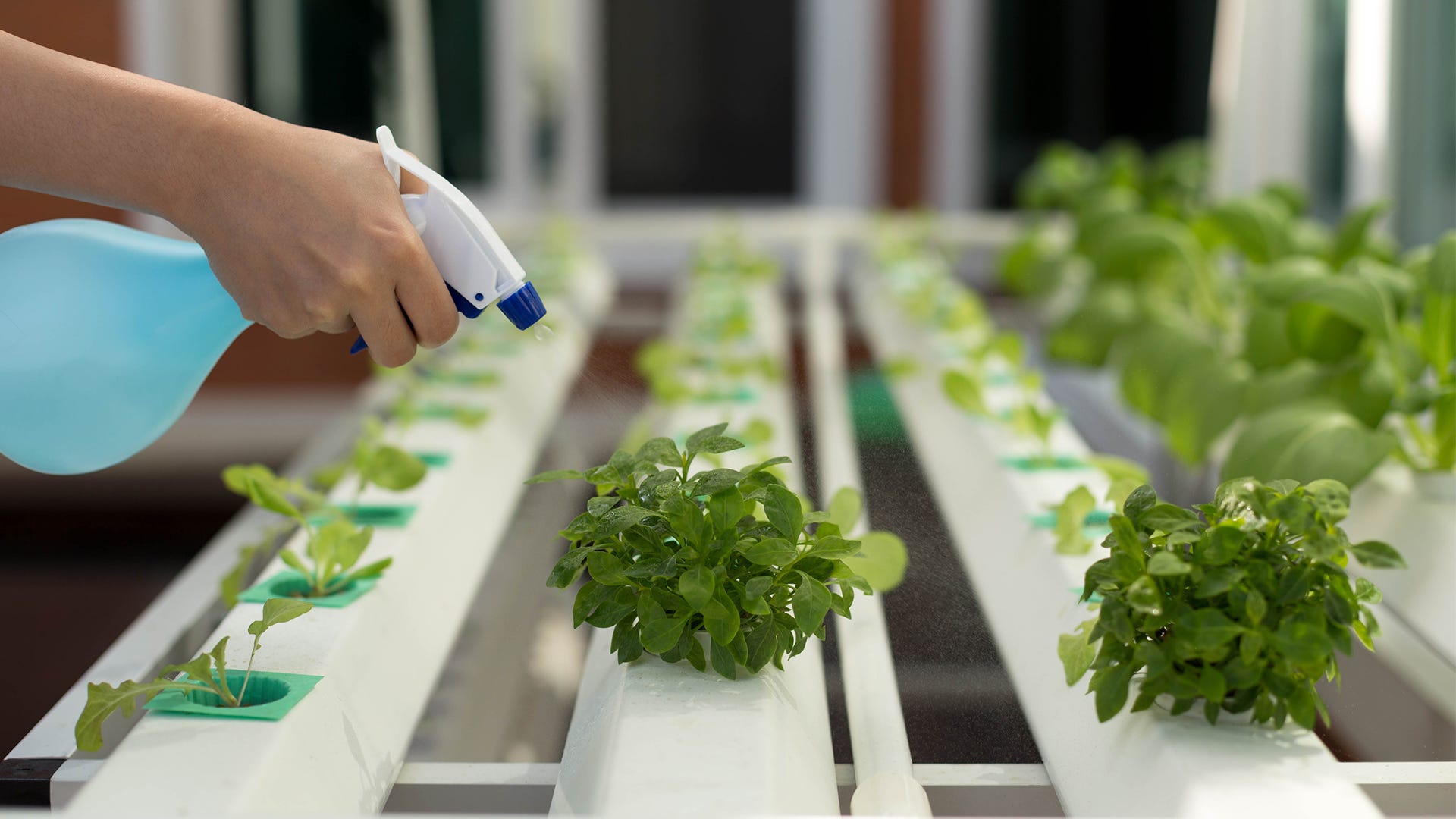
Your kitchen holds the cure for so many of the problems that plants face in an indoor garden. Just whip up one of these safe, simple formulas to fix what’s ailing your plants.
Nutrient Booster With Benefits
Brew the perfect cup of gently nourishing and disease-inhibiting compost tea for your indoor garden. Steep 1 pound of good quality, finished compost (pleasant, earthy smell; few identifiable ingredients) in a bucket with 1 gallon of water. Stir once daily for five to seven days. Finished tea should have no ammonia scent or other strong odors. Strain the solids (put these back in your compost pile). Spray undiluted liquid on leaves as a mild foliar fertilizer and to help prevent powdery mildew and damping-off fungi. Use compost tea to moisten the growing medium in seedling flats before planting or water houseplants with it as an occasional pick-me-up.
Controls for Creepy-Crawlies
Shower the plants you love with fresh, clean water and wash away pests, like aphids and mites. A strong spray of water directed at stem tips and under leaves where aphids tend to cluster can be all it takes to clear up an outbreak of these tiny plant suckers. Likewise, mites (look for their telltale webbing on the undersides of foliage) prefer dry conditions and can be washed down the drain by giving plants a thorough (but gentle) shower. Monitor plants, post-shower, to make sure that any lingering pests don’t recolonize them. Rinse and repeat as needed.
Send aphids, mealybugs, and spider mites to their doom with an easy, nontoxic spray that uses biodegradable dishwashing liquid or liquid castile soap to make a pest stopper that poses no harm to humans. Combine a tablespoon of liquid soap and a tablespoon of vegetable oil in a ½ gallon of water and apply to places where pests cluster (stem tips, buds, leaf axils, and the undersides of leaves) with a spray bottle.
Disease Deterrents
Just like Granny used to drink but brewed a bit stronger, chamomile tea contains compounds that are anything but soothing to bad fungal organisms, such as damping-off disease. Look for chamomile flowers or tea bags at your local health-food store. Pour 8 ounces of boiling water over a heaping tablespoon of dried chamomile blossoms. Let the tea steep until it cools to room temperature, then strain the liquid into a spray bottle. Use the tea to moisten seedling flats before planting, to soak seeds just before sowing, and to water newly planted seed flats.
Fungal diseases thrive in acidic (low pH) conditions and can be quick to appear and spread whenever plants are under moisture stress (be it too much or too little). Baking soda raises pH levels, making conditions inhospitable for wandering fungi. If grayish-white powdery mildew or dusty brown downy mildew shows up on your plants, stop its advances with this straight-from-the-kitchen spray. Mix 1 tablespoon of baking soda and 1 tablespoon of vegetable oil in a gallon of water and spray leaf surfaces—upper and lower—thoroughly. Remove leaves that are heavily coated by mildew before you spray. Use this spray only occasionally; baking soda can create unhealthy sodium levels in the soil, and repeated oil applications can injure the foliage of some plants.
This spray, or the same proportions using potassium bicarbonate in place of the baking soda, also works well at stopping the spread of black spot disease on roses.



